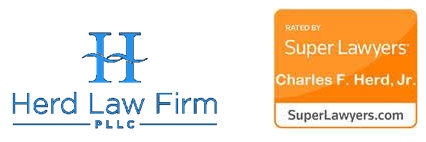Insuring Self-Driving Cars: Where does the Liability Lie?

Photo credit https://www.nhtsa.gov/
Self-driving car technology is becoming increasingly common in today’s automobile market, and it has raised questions with both the insurance sector and among consumers about who will provide coverage when these vehicles crash. Although these cars can operate themselves, the primary question raised here will be whether auto crashes are the manufacturer’s responsibility and therefore covered by product liability insurance, or if the fault is instead the driver’s and will instead be covered by personal auto insurance.
Recently, around 34 crashes involving autonomous or partially autonomous vehicles have prompted interest into how these incidents will be handled by both insurance providers and manufacturers. The National Highway Traffic Safety Administration (NHTSA) has launched investigations into 34 crashes related to advanced driver-assistance systems, mostly involving Tesla vehicles, but some involving models from Cadillac, Volvo, Lexus and Navya, a French firm developing self-driving shuttles. However, if a human driver is not available, it is likely insurers will need to collect information from the vehicles themselves for facts such as initial speed, when the car became aware of the person, vehicle or object with which they collided, braking, etc.
Many cars already keep information about crashes in an event data recorder, and several insurance organizations have lobbied Congress to give insurers access to vehicle data- which they say will support increasing automation of cars.
However, coverage of these vehicles may vary by depending on circumstance. For cars with advanced driver-assistance features, the driver is still “responsible for the overall operation,” so liability would fall under personal auto coverage. However, if the vehicle malfunctioned, the manufacturer’s product liability could be invoked- which is already happening with standard cars. What could vary with a fully autonomous vehicle is the fact that individuals could have liability exposure if maintenance, including in the form of software updates, was not completed properly.
Regardless, there are not yet special legal or regulatory requirements related to personal insurance for autonomous vehicles. One reason for this is due to the lack of vehicles available yet with fully automated driving features. Nevertheless, legal professionals and consumers should be preparing for the day they arrive, as companies such as Google, Volvo, and Ford already have made definitive steps towards providing self-driving technology in their products in the very near future. Waymo LLC, Google’s self-driving car project, already offers a ride service near Phoenix, AZ with fully autonomous and driverless vehicles.
The main issue with self-driving technology in today’s market is how this tech could make cars safer and reduce manufacturers’ liability, which certainly motivate funding for research. At the moment, however, it is not clear exactly how much safer these vehicles will be, due to lack of data. Insurers have billions of miles of data on human drivers for many years now, but far less information for autonomous fleets.
SAE International, which was founded as the Society of Automobile Engineers in 1905, defines five levels of industrial and commercial self-driving:
a) Levels 1 and 2 involve driver support features widely available today, such as automatic emergency braking, lane departure warnings, lane centering or adaptive cruise control.
b) Level 3 means a person must drive some of the time, depending on the situation.
c) Level 4 means a car operates on its own, but under limited conditions, and
d) Level 5 means it can operate independently everywhere, in all conditions.
Aside Google’s Waymo, which claims a Level 4 system, cars with Level 4 and Level 5 features may not be available until several decades of research have been completed.
Meanwhile, the life insurance industry continues to study effects that autonomous vehicles could have on claims. For example, there were 1.10 traffic deaths per 100 million miles driven in 2019, according to NHTSA, down from a rate of 1.14 the previous year. Preliminary data from last year, when people stayed home more than usual because of the COVID pandemic, indicates fewer deaths but also fewer miles driven, so the fatality rate actually rose to 1.25 for the first six months of the year.
Most auto wrecks result from driver error, however, so using more autonomous vehicles is expected to dramatically reduce traffic deaths. It is still too early to determine how the technology might affect life insurance premium rates overall, though, until longer-term studies are possible.
The above is a summary of one or more news stories reviewed by the author of this article. It may contain comments or views of the author only.
Have you or a member of your family been injured by a self-driving capable vehicle? If so, at Herd Law Firm, we have the experience and resources to investigate and pursue these claims. If you or a passenger was injured while in a self-driving vehicle, you may have a claim; we can discuss details with you and help you recover the compensation you deserve. Contact our firm for a free and confidential evaluation today.
This article is intended for general interest and does not constitute legal advice.







